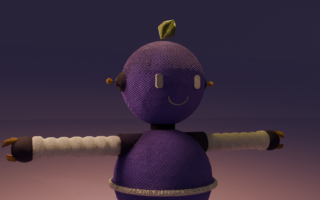In the dynamic world of graphic design, choosing the right software can make or break your creative process. Adobe Illustrator and Photoshop stand as titans in the industry, each with its unique strengths and specialized applications. This comprehensive guide will help you understand which tool best suits your specific design needs and professional goals.
Understanding the Basics
What is Adobe Illustrator?
Adobe Illustrator is a vector-based graphic design software that excels in creating scalable artwork. Born in 1987, it has evolved into the industry standard for vector graphics, allowing designers to create everything from simple logos to complex illustrations that can be resized infinitely without losing quality. The software operates on mathematical equations rather than pixels, ensuring crystal-clear output at any size.
What is Adobe Photoshop?
Photoshop, launched in 1990, is primarily a raster-based image editing program that has become synonymous with photo manipulation. However, it’s much more than just a photo editor. The software offers powerful tools for digital painting, graphic design, and web design, working with pixel-based images to create and modify visual content.
Key Differences Between Illustrator and Photoshop
Vector vs. Raster Graphics
The fundamental difference between these tools lies in their core technology. Illustrator creates vector graphics, which are mathematical representations of shapes and lines. This means you can scale an Illustrator creation from a business card to a billboard without any loss in quality. Photoshop, conversely, works with raster images composed of pixels, which can become pixelated when enlarged beyond their original size.
File Types and Compatibility
Illustrator primarily works with .AI and .EPS files, though it can export to various formats including .SVG, which is crucial for web development. Photoshop handles a broader range of file types, including .PSD, .JPEG, .PNG, and .TIFF, making it more versatile for web and print media. However, this versatility comes with the limitation of resolution dependency.
Workspace Interface Comparison
Each software offers a distinct workspace experience. Illustrator’s interface focuses on precision tools for shape manipulation, path editing, and typography. Its workspace is optimized for creating from scratch, with tools arranged for efficient vector work. Photoshop’s interface is built around layers and filters, with tools designed for pixel-level manipulation and image enhancement.
When to Use Adobe Illustrator
Logo Design and Branding
Illustrator is the undisputed champion for logo design and branding materials. Its vector capabilities ensure that your logo remains crisp and professional across all applications, from business cards to billboards. The software’s precise tools for shape manipulation and color management make it perfect for creating consistent brand identities.
Vector Illustrations
For clean, scalable illustrations, Illustrator is unmatched. Its pen tool and shape-building capabilities allow designers to create complex illustrations that maintain their quality regardless of size. This is particularly valuable for infographics, technical drawings, and architectural plans.
Typography and Text Effects
When it comes to working with text, Illustrator offers superior typography tools. You can create custom type designs, convert text to outlines, and apply complex effects while maintaining editability. This makes it ideal for creating custom lettering, typography-based logos, and display text for marketing materials.
Scalable Graphics
Any project requiring scalability should default to Illustrator. This includes:
- Corporate identity packages
- Vehicle wraps
- Signage
- Icon design
- Pattern creation
When to Use Adobe Photoshop
Photo Editing and Manipulation
Photoshop excels in image manipulation and enhancement. Its sophisticated selection tools, adjustment layers, and filters make it the go-to choice for:
- Portrait retouching
- Color correction
- Background removal
- Photo compositing
- Special effects
Digital Painting
For digital artists, Photoshop offers an extensive array of brushes and painting tools. The software’s pressure sensitivity support and brush customization options make it ideal for:
- Digital artwork
- Concept art
- Texture creation
- Matte painting
- Character design
Web Graphics
When creating graphics for digital platforms, Photoshop provides excellent tools for:
- Social media graphics
- Web banners
- UI elements
- Email marketing visuals
- Mobile app assets
Complex Effects and Filters
Photoshop’s vast library of filters and effects allows designers to create:
- Realistic textures
- Environmental effects
- Light and shadow effects
- Abstract backgrounds
- Photo-realistic compositions
Performance Comparison
System Requirements
Both programs demand significant computing power, but Photoshop typically requires more RAM when working with large files or multiple layers. Illustrator, while processor-intensive, generally manages memory more efficiently due to its vector-based nature.
File Size Management
Vector files from Illustrator are usually smaller than comparable Photoshop files, as they store mathematical equations rather than pixel data. However, complex vector illustrations can become processor-intensive when displaying or printing.
Processing Speed
Performance varies based on the complexity of your projects:
- Illustrator excels with simple to moderately complex vector designs
- Photoshop performs better with image editing and single-canvas artwork
- Both can slow down with extremely complex projects or insufficient hardware
Cost Analysis
Subscription Plans
Adobe offers both programs through Creative Cloud subscriptions:
- Individual app subscriptions
- Complete Creative Suite packages
- Student and teacher discounts
- Business and enterprise solutions
Value for Money
The investment value depends on your professional needs:
- Illustrator: Essential for brand design and vector work
- Photoshop: Crucial for photo editing and digital art
- Both: Ideal for comprehensive design capabilities
Learning Resources
Both programs offer extensive learning opportunities:
- Official Adobe tutorials
- Online courses and certifications
- Community forums and resources
- Third-party training platforms
Professional Applications
Industry Standards
Different sectors prefer different tools:
- Branding agencies favor Illustrator
- Photography studios rely on Photoshop
- Marketing departments often need both
- Web design teams commonly use both in conjunction
Career Opportunities
Proficiency in either software opens different career paths:
- Illustrator specialists often work in logo design and branding
- Photoshop experts find opportunities in photography and digital art
- Mastering both expands job prospects significantly
Portfolio Considerations
Your software choice affects your portfolio development:
- Illustrator projects demonstrate technical precision and scalability
- Photoshop work showcases creativity and image manipulation skills
- Combined knowledge shows versatility
Making the Right Choice
Project-Based Decision Making
Choose your software based on project requirements:
- Use Illustrator for scalable, print-focused projects
- Choose Photoshop for photo-heavy or web-specific work
- Consider the end-use and client requirements
Hybrid Workflows
Many professionals use both programs in tandem:
- Create base vectors in Illustrator
- Add effects and textures in Photoshop
- Export appropriately for different media
Future-Proofing Your Skills
Stay competitive by:
- Learning both programs’ fundamentals
- Keeping up with software updates
- Understanding integration possibilities
- Developing workflow efficiency
Conclusion
The choice between Illustrator and Photoshop ultimately depends on your specific needs and goals. While Illustrator excels in vector-based design and scalable graphics, Photoshop dominates in photo editing and digital painting. Many professional designers find that mastering both programs provides the most comprehensive toolkit for tackling any design challenge. Consider your primary focus, project requirements, and career aspirations when making your choice.
FAQ Section
- Can I create logos in Photoshop instead of Illustrator?
While possible, it’s not recommended for professional logo design due to scaling limitations. Illustrator’s vector capabilities make it the industry standard for logo creation. - Do I need both programs if I’m just starting in graphic design?
Start with the program that aligns with your immediate goals. If you’re focusing on branding, begin with Illustrator. For photo editing or digital art, start with Photoshop. - Which software is easier to learn for beginners?
Photoshop typically has a gentler learning curve for beginners, as its tools are more intuitive for those familiar with basic photo editing. However, Illustrator’s precision tools can be more satisfying for those who enjoy technical drawing. - Can I transfer files between Illustrator and Photoshop?
Yes, both programs support file transfer and integration. You can export Illustrator files to Photoshop and vice versa, though some properties may change during conversion. - Which program is better for creating social media graphics?
While both can create social media graphics, Photoshop is often preferred due to its preset sizes, photo editing capabilities, and extensive effects library. However, Illustrator is better if your social media strategy involves consistent branding elements.



